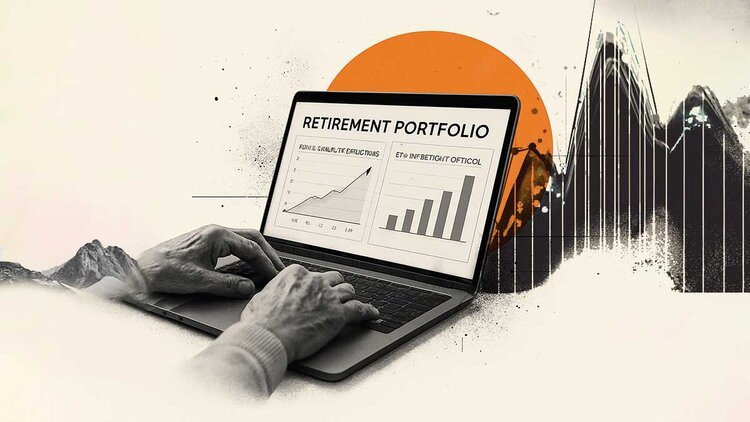In the vast world of Individual Retirement Accounts (IRAs), two approaches are possible when it comes to preparing for old age: the Traditional IRA and the Self-Directed IRA.
Behind these somewhat technical terms lie two very distinct investment philosophies, which can have a major impact on your retirement planning strategy and the way in which it complements your future Social Security income.
Traditional IRA: Simplicity and a reassuring framework
The Traditional IRA is undoubtedly the best-known. It’s a tax-advantaged retirement savings account in which your contributions are generally tax-deductible, and earnings accumulate on a tax-deferred basis until withdrawal at retirement age. At that point, distributions are taxed as ordinary income.
This type of IRA offers a classic range of investments: Stocks, Bonds nad Mutual Funds or ETFs.
They offer a relatively simple management, often lower fees and the possibility of delegating a large proportion of investment decisions. For many, it’s a solid foundation in a retirement planning strategy.
Self-Directed IRA: Freedom and extreme diversification
The Self-Directed IRA (SDIRA) retains the same tax advantages as a Traditional IRA, but it radically changes the game when it comes to investment choices. Here, you’re in the driver’s seat.
In addition to Stocks and Bonds, an SDIRA allows you to invest in Real Estate, Private Equity, Precious Metals and even Cryptocurrencies.
This openness offers far greater diversification potential, and therefore, potentially, better long-term performance.
But with this freedom comes responsibility. It’s up to you to comply with strict IRS rules, avoid prohibited transactions and assume the often higher risk of alternative assets.
Comparison: Control, risk and objectives
While both options belong to the Individual Retirement Accounts (IRA) family, their uses differ:
- Control: The Traditional IRA leaves plenty of room for financial intermediaries, while an SDIRA requires personal involvement in every decision.
- Diversification: A Traditional IRA remains confined to conventional financial markets, while an SDIRA opens the door to assets less correlated to the Stock market, which can offer protection in the event of a crisis, but also increase illiquidity.
- Costs: The standard management of a Traditional IRA is often less expensive, but an SDIRA entails higher costs, linked to the administration and complexity of operations.
- Risks: An SDIRA exposes you to less-regulated and more volatile assets, requiring greater expertise and risk tolerance.
Which choice for your retirement?
The choice between Traditional IRA and Self-Directed IRA essentially depends on your profile.
Do you prefer simplicity, predictability and professional monitoring? A Traditional IRA may suffice as a solid foundation, complementing your Social Security.
Do you have specific skills in a particular field (Real Estate, Private Equity, Commodities) and accept more active management? An SDIRA can become a powerful tool for diversification and growth in your retirement planning.
In any case, there’s nothing to stop you combining the two, taking advantage of the stability of a Traditional account and the agility of a Self-Directed account.
But before deciding, it’s essential to assess your investment horizon, your risk tolerance and your ability to manage more complex investments.
IRAs FAQs
An IRA (Individual Retirement Account) allows you to make tax-deferred investments to save money and provide financial security when you retire. There are different types of IRAs, the most common being a traditional one – in which contributions may be tax-deductible – and a Roth IRA, a personal savings plan where contributions are not tax deductible but earnings and withdrawals may be tax-free. When you add money to your IRA, this can be invested in a wide range of financial products, usually a portfolio based on bonds, stocks and mutual funds.
Yes. For conventional IRAs, one can get exposure to Gold by investing in Gold-focused securities, such as ETFs. In the case of a self-directed IRA (SDIRA), which offers the possibility of investing in alternative assets, Gold and precious metals are available. In such cases, the investment is based on holding physical Gold (or any other precious metals like Silver, Platinum or Palladium). When investing in a Gold IRA, you don’t keep the physical metal, but a custodian entity does.
They are different products, both designed to help individuals save for retirement. The 401(k) is sponsored by employers and is built by deducting contributions directly from the paycheck, which are usually matched by the employer. Decisions on investment are very limited. An IRA, meanwhile, is a plan that an individual opens with a financial institution and offers more investment options. Both systems are quite similar in terms of taxation as contributions are either made pre-tax or are tax-deductible. You don’t have to choose one or the other: even if you have a 401(k) plan, you may be able to put extra money aside in an IRA
The US Internal Revenue Service (IRS) doesn’t specifically give any requirements regarding minimum contributions to start and deposit in an IRA (it does, however, for conversions and withdrawals). Still, some brokers may require a minimum amount depending on the funds you would like to invest in. On the other hand, the IRS establishes a maximum amount that an individual can contribute to their IRA each year.
Investment volatility is an inherent risk to any portfolio, including an IRA. The more traditional IRAs – based on a portfolio made of stocks, bonds, or mutual funds – is subject to market fluctuations and can lead to potential losses over time. Having said that, IRAs are long-term investments (even over decades), and markets tend to rise beyond short-term corrections. Still, every investor should consider their risk tolerance and choose a portfolio that suits it. Stocks tend to be more volatile than bonds, and assets available in certain self-directed IRAs, such as precious metals or cryptocurrencies, can face extremely high volatility. Diversifying your IRA investments across asset classes, sectors and geographic regions is one way to protect it against market fluctuations that could threaten its health.

